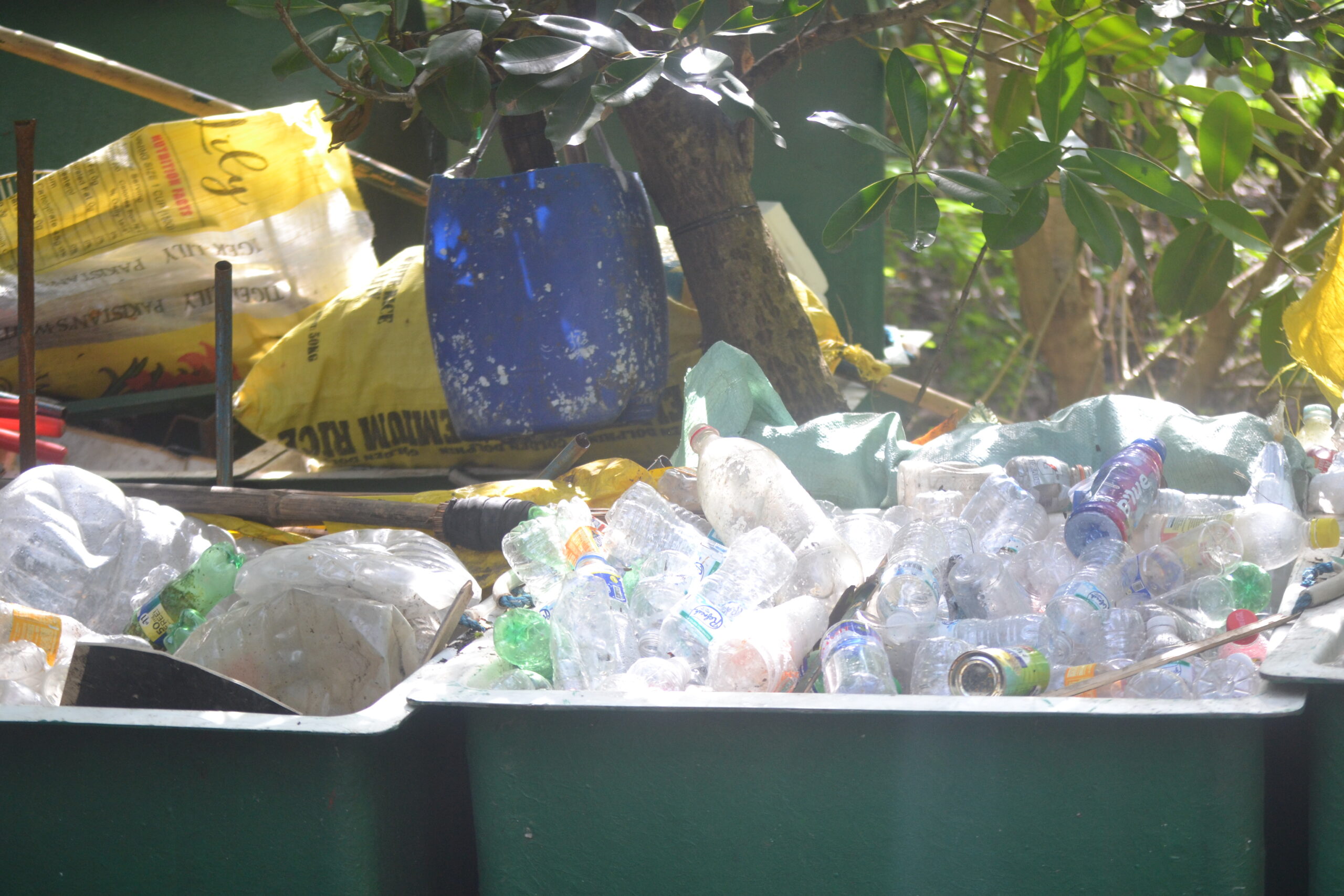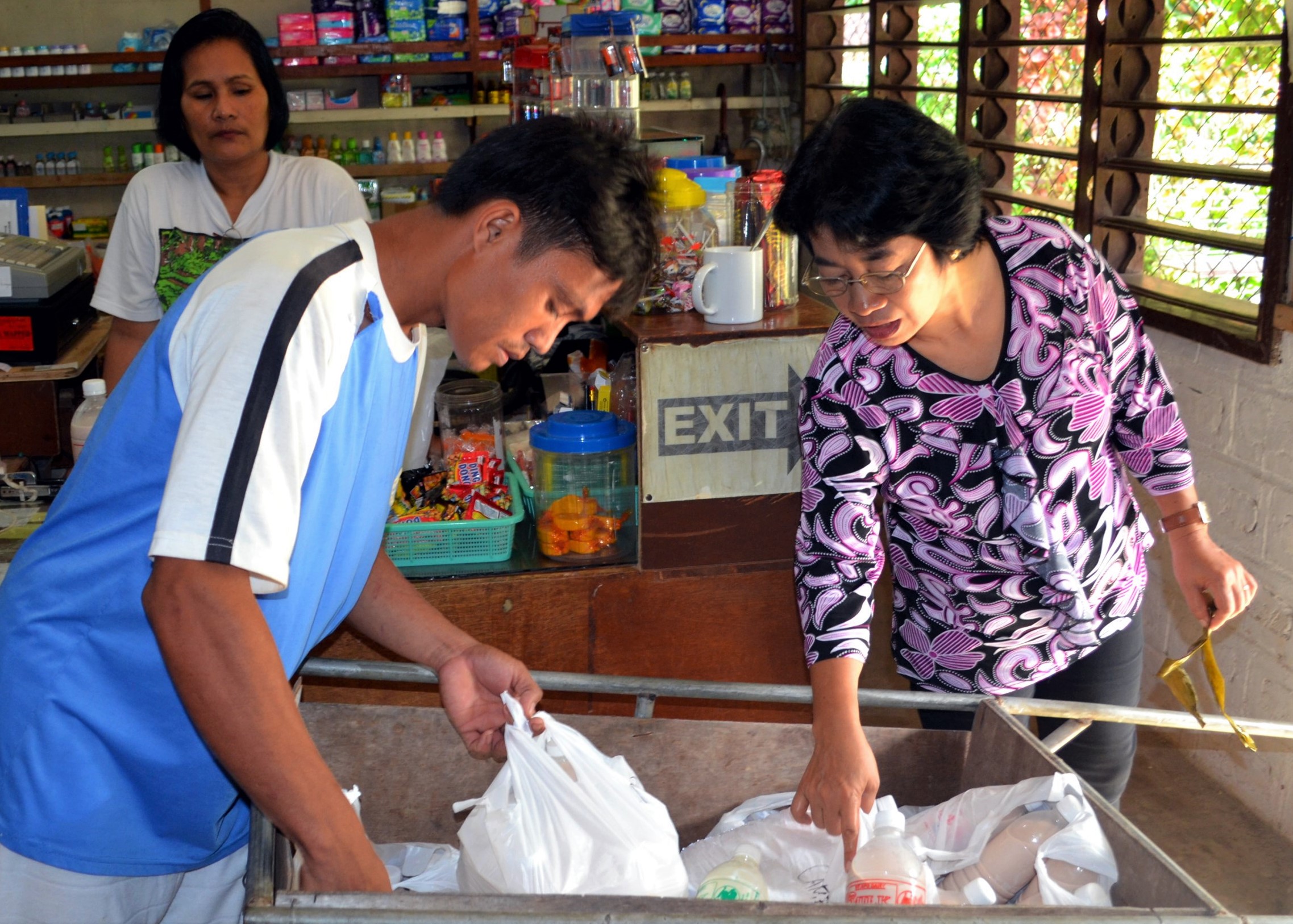Text and Photos by Henrylito D. Tacio
(First of Two Parts)
It all started in 1933 when chemists in Norwich, England, accidentally produced polyethylene. By 1960, a Swedish company figured out how to make bags using thin film polyethylene. Five years later, Gustaf Thulin Sten perfected the process and invented what is known as the T-shirt plastic bag.
In 1979, single-use plastic bags hit the market. These caught the attention of urban shoppers. Soon enough, it became popular around the globe, including the Philippines. “Plastic shopping bags are now an omnipresent product found in every corner of the world,” said the United Nations Environment Program (UNEP).
“Since they were introduced in the 1970s, plastic bags have infiltrated our lives,” wrote Caroline Williams in New Scientist. “Globally, we carry home between 500 billion and a trillion every year – about 150 bags for every person on earth, or to put it another way, a million every minute and rising.”
UNEP said one to five trillion plastic bags are consumed worldwide every year. Five trillion is almost 10 million plastic bags a minute. If tied together, they would go around the world seven times every hour and cover an area twice the size of France.
“Plastic is a miracle material,” said Erik Solheim, UNEP head. “Thanks to plastics, countless lives have been saved in the health sector, the growth of clean energy from wind turbines and solar panels has been greatly facilitated, and safe food storage has been revolutionized.”
In the Philippines, the so-called “sachet economy” has contributed to the proliferation of plastics. Products sold in single-use sachets include instant coffee, shampoo, soy sauce, cooking oil, food seasoning, and toothpaste.
“Because they are easy to sell – ribbons of single-use products hang from neighbourhood stores even in the most remote communities – large multinational manufacturing companies continue to market them,” the World Wide Fund for Nature (WWF) observes.
Plastic is cheap, lightweight, and easy to make. “Much of the plastic we produced is designed to be thrown away after being used only once,” the UNEP stated. “As a result, plastic packaging accounts for about half of the plastic waste in the world.”
In the Philippines, for instance, Filipinos discard 60 billion plastic sachets each year, according to one research group. That’s about one sachet per person per day on a per capita basis.
“The problem with plastics has been escalating for decades, and the Philippines has been identified as the world’s third largest contributor of plastics in the ocean,” WWF said. “Plastic pollution has always been a huge issue in the Philippines with the continuous generation of plastic wastes and poor waste management.”
This must be the reason why in Davao City, the local government – through the City Environment and Natural Resources Office (CENRO) – is urging Dabawenyos to start using recyclable or biodegradable counterparts ahead of the implementation of city ordinance no. 0500-21 series of 2021 – otherwise known as the “No to Single-Use Plastics Ordinance of 2021.”
The ordinance does not only regulate single-use plastics in business establishments but also their individual use. Its Implementing Rules and Regulations (IRR) is expected to be imposed in the third quarter this year.
The City Information Office (CIO), in a press release, said, quoting Orly Limpangog, “the ordinance is not only aimed at managing the city’s solid waste but also to lessen the amount of garbage that ends up in Davao City’s waters and coastal areas.”


“The big fast-food chains like McDonald’s and Jolibee are now using wooden utensils,” said Limpangog, who is the representative of CENRO Information Education Unit during the recent “Go Clean, Go Green” program.
Those who are caught violating the ordinance for the first time are fined P1,000 or render an 8-hour environmental service. The second offense entails a P3,000 fine or a 16-hour environmental service. The maximum penalty is set at P5,000.
Data from the Environmental Management Bureau of the Department of Environment and Natural Resources (DENR) showed that in 2020 that four hundred and eighty-eight (488) local government units have ordinances banning single-use plastics.
A WWF report launched in October 2020 showed the challenges for waste management in the country. More than 2 million tons of plastic waste, 15.43 kilograms per capita per year, is generated annually in the country, 760,000 tons or 35% are leaked into the open environment while 706,000 tons or 33% go to landfills and dumpsites while only 9% is recycled.
About 35,800 tons of garbage, which include plastics, are generated each day by Filipinos, according to a position paper written by Alicia Castillo and Suchiro Otoma. “On average, each person in the country produces about 0.5 kilogram and 0.3 kilogram of garbage every day in the urban and rural areas, respectively.”
Another report – from the National Solid Waste Management Commission and the World Bank – said 2.27 million tons of garbage are collected every year out of the 2.7 million tons produced. “Of this, 386,000 tons are still leaked into the ocean,” the report said.
“An absence of garbage collection services in secondary cities and many of the country’s smaller islands is largely to blame for the overwhelming amount of plastic coming from the country,” Froilan Grate, executive director of the Philippine branch of the Global Alliance for Incinerator Alternatives, was quoted as saying by South China Morning Post.
A news report said single-use plastics for food and cosmetics are one of the main contributors to plastic waste in landfills and in oceans. Around 40% of all plastic that is produced is used for packaging, and the World Economic Forum estimates that 95% of this is not recycled after its initial use.
A landmark report by the international non-profit organization, Reloop, said that single-use beverage containers are rapidly displacing refillable systems in many parts of the world and resulting in massive increases in wastage and pollution.
According to the report, What We Waste, beverage container sales have practically doubled between 1999 and 2019 across 93 countries around the world. Over the same 20-year period, the proportion sold in PET (polyethylene terephthalate, the chemical name for polyester) plastic has also more than doubled – from 17% to 41%! – resulting in a corresponding spike in wastage especially in countries which saw an increasing rise in sales of single-use plastics or one-way containers.
These reports are alarming, indeed. “Following the trajectory of plastic production and mismanagement, United Nations reports predicted that by 2050, there will be more plastic in the oceans than there are fish,” said Roy E. Cimatu when he was still the environment secretary.
In the award-winning 1967 movie, The Graduate, the character portrayed by newcomer Dustin Hoffman (who received a well-deserved Oscar nomination for Best Actor) asked some advice on career direction. “Plastics, my boy. Plastics,” he was told.
Businesses all over the world are heeding the advice. Unknowingly, no one knew at the time the other side of plastics, which are non-biodegradable. As a matter of fact, plastics are materials made to last forever.
“Disposed plastic materials can remain in the environment for up to 2,000 years and longer,” wrote Barry E. DiGregorio in an article.
“Most plastics do not biodegrade,” UNEP said. “Instead, they slowly break down into smaller fragments known as microplastics. Studies suggest that plastic bags and containers made of expanded polystyrene foam (commonly known as ‘Styrofoam’) can take up to thousands of years to decompose, contaminating soil and water.”
Microplastics, if ingested by fish or other marine life, can enter the food chain. Microplastics have already been found in common table salt and both tap and bottled water. Although, in recent years, research on the effects of microplastics has been growing, still little is known about the exact impacts on human health.
Plastics “is in our air, our water, our food, our excrement,” Nina Butler, the chief executive officer of More Recycling, a research and consulting company that works with the plastic industry on recycling, was quoted as saying by the media. “It’s very, very pervasive.”
Plastic bags and other single-use plastics can choke waterways and exacerbate natural disasters. In 1988, poor drainage resulting from plastic litter clogging drains contributed to devastating floods in Bangladesh, causing several deaths as two-thirds of the country was submerged.
Jonas Leones, then the DENR undersecretary for policy, planning, and international affairs, said the effects of plastics can be devastating for marine biodiversity. “Small litters like candy wrappers end up in our oceans,” he said. “It is eaten by marine species, clogging their stomachs and causing their death.”
In 1997, sailor and researcher Charles Moore discovered the Great Pacific Garbage Patch, the largest of several gyres in the world’s oceans where immense amounts of plastic waste have accumulated.
Plastics also play a role in climate change as its production, refining, and manufacture are a source of greenhouse gas emissions since it uses fuel in extraction and transport.
“Greenhouse gas emissions from the plastic lifecycle threaten the ability of the global community to keep global temperature rise below 1.5°C,” said Interfacing Development Interventions for Sustainability (IDIS) in a statement. “By 2050, the greenhouse gas emissions from plastics could reach over 56 gigatons, which is 10-13% of the entire remaining carbon budget.”
Plastics are also hazardous to human health. Two broad classes of plastic-related chemicals are of critical concern for human health: bisphenol-A and additives used in the synthesis of plastics, which are known as phthalates.
Exposure to these two chemicals, said a study conducted by the Arizona State University Biodesign Institute, is linked to cancer, birth defects, impaired immunity, endocrine disruption, and other ailments.
“The economic damage caused by plastic waste is vast,” UNEP stated in its report, Single-Use Plastics: A Roadmap for Sustainability. “Plastic litter in the Asia-Pacific region alone costs its tourism, fishing and shipping industries $1.3 billion per year.”
Studies suggest that the total economic damage to the world’s marine ecosystem caused by plastic amounts to at least $13 billion every year. “The economic, health and environmental reasons to act are clear,” UNEP said.
During the time of President Benigno S. Aquino III, the Ecological Solid Waste Management Act of 2000 (Republic Act No. 9003) was signed. It aims to promote environmental awareness and action among Filipinos and establish public participation in the development of national and local integrated, comprehensive and ecological waste management programs.
In 2020, then DENR Secretary Cimatu signed the National Solid Waste Management Commission (NSWMC) Resolution No. 1363, series of 2020, which bans the use of “unnecessary” single-use plastics products, particularly cups less than 0.2 millimeter in thickness, drinking straws, coffee stirrers, spoons, forks, knives, labo or thin and translucent bags, and thin-filmed sando bags lower than 15 microns.
As a result of the resolution, the DENR managed to ban “unnecessary” single-use plastics at government offices.
Another good news: the Department of Science and Technology (DOST) announced that plastic straws and stirrers are officially included in the Non-environmentally Acceptable Products and Packaging (NEAPP).
The blatant use of plastics has to stop – now! “It is high time we refrain from using disposable plastic products that are used in minutes, but persist in the environment forever,” Cimatu stressed. (To be concluded)

